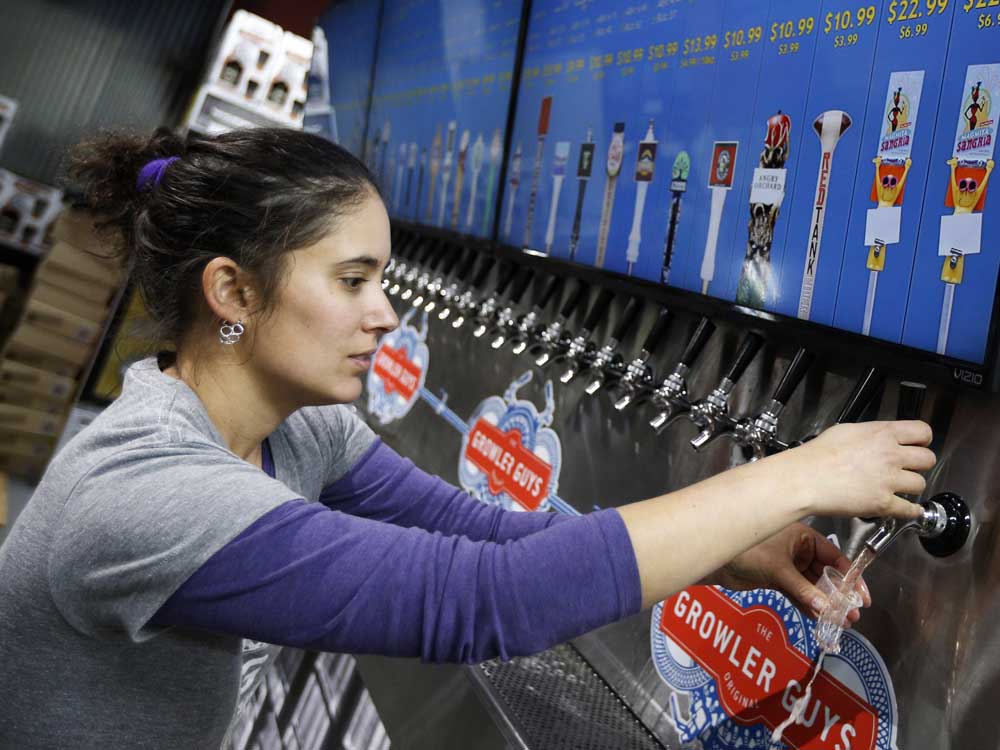Wine growlers still a go
Published 12:00 am Tuesday, February 10, 2015

- An employee pours a sample of sangria for a customer at Growler Guys’ east-side location in Bendin 2015. Bulletin file photo
WASHINGTON — Last year, the federal Alcohol, Tobacco Tax and Trade Bureau backed off a proposal that would have required retailers selling wine in growlers to follow regulations that applied to vintners putting wine in sealed bottles.
Almost a year later, the agency has not published new rules for wine growlers that could apply in places like Oregon, where they are legal.
Trending
Agency spokesman Tom Hogue said Monday the agency was still proceeding with rulemaking for growlers but could not provide a time frame for when its proposed rules would be published.
Once the proposed rules are announced, the public will have a chance to weigh in and comment, just like any other rulemaking process, he said.
Similar to beer growlers, customers bring refillable containers to markets, bars, restaurants or wineries to be filled on the premises. Containers must be 2 gallons or less in size, with a cap or other method of sealing the opening.
While wine growlers have become popular in areas with a strong craft beer presence where beer growlers are commonplace, they have yet to catch on with wine drinkers nationwide, according to industry observers.
In a review of wine’s economic impact in Oregon published last month, Full Glass Research’s Christian Miller concluded the industry contributed $3.35 billion in economic activity to Oregon’s economy, including $207.5 million in wine-related tourism.
But the economic impact of wine growlers was tough to pin down, Miller noted.
Trending
“Because of the decentralized nature of the growler business and some confusion in implementation of the law, it is not currently feasible to estimate its economic impact,” he wrote.
Michelle Kaufmann, communications manager for Oregon Wine Board, said while there weren’t many wineries involved in selling wine for growlers, the ones that do are very enthusiastic, particularly in their commitment to sustainability by reusing containers.
“A lot of wineries have their own branded reusable packaging that they prefer the consumer would prefer,” Kaufmann said.
Most consumers drink the wine they purchase within two days, which means wine in growlers will still be fresh, she said. A properly cleaned, sealed and stored growler can keep wine fresh for a few weeks, but not for long periods of time.
The more people learn about wine growlers, the more popular they will become, she predicted.
“Now that you have more places where you can (use a refillable container to buy wine), I think it will catch on as more consumers learn about it,” she said. “It’s exciting that we’re seeing more stores and venues come online and offer it, and the restaurant scene as well. I think that it shows a lot of promise.”
Jon Fredrikson, a wine consultant with Gomberg, Fredrikson and Associates, based in Woodside, California, said the introduction of wine growlers has not made a huge impact on the American wine market.
“It’s small, regional and limited to a certain number of producers,” he said. “For those that do it, sure, it’s a nice business.”
In some cases, wineries may prefer to sell their surplus wine directly to consumers, which fetches a higher price than selling it in bulk to another wine producer, he said.
Growlers make sense primarily for everyday wine, not for more expensive wines carefully fermented and bottled by wineries trying to reach higher-end consumers, he said.
“The whole thrust of Oregon producers is to bottle a higher-end product,” he said.
— Reporter: 202-662-7456, aclevenger@bendbulletin.com








